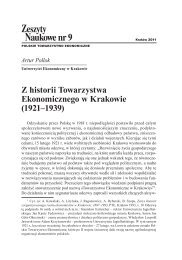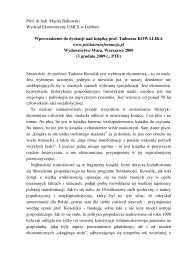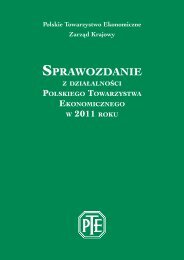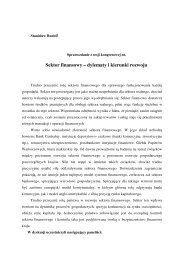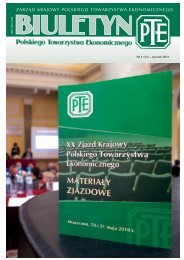NESTA PROJECT: FINE ARTSITS AND INNOVATION
NESTA PROJECT: FINE ARTSITS AND INNOVATION
NESTA PROJECT: FINE ARTSITS AND INNOVATION
You also want an ePaper? Increase the reach of your titles
YUMPU automatically turns print PDFs into web optimized ePapers that Google loves.
The study differentiates between what it describes as cultural<br />
activities – the arts and media industries – and creative<br />
activities – design, advertising and architecture. It argues<br />
that the ‘creative’ sectors are where culture acts essentially<br />
as an input into the production of non-cultural goods. In<br />
other words, creative activities incorporate elements from<br />
‘culture.’ Not all design applications have a cultural output –<br />
car design is a good example - but the design is a creative<br />
activity whose input is undoubtedly cultural, based in this<br />
case on visual arts.<br />
Cunningham (2006) objects to what he sees as the attempt<br />
by Throsby and others to place the creative arts at the<br />
centre of the wider creative economy. Simply because the<br />
creative industries produce ‘non–cultural’ outputs, he<br />
believes there is no reason to suppose they are less ‘core’<br />
than other sectors.<br />
However, a modified version of both Throsby and the KEA<br />
model, with a series of concentric circles, has been adopted<br />
by the DCMS as part of its creative economy review (Andari<br />
et al. 2007). And many European policymakers are<br />
particularly interested in the links between (subsidised)<br />
cultural activities, creativity and innovation. Whether or not<br />
this suggests a centre-periphery model is another matter.<br />
One model of the cultural and creative sectors which seeks<br />
to break away from the core/periphery model is that<br />
produced by Burns Owens Partnership (BOP) and the<br />
Manchester Institute for Popular Culture (MIPC) for <strong>NESTA</strong><br />
(<strong>NESTA</strong>, 2006b). Unlike either the DCMS or Throsby/KEA<br />
models, this reflects differences in market structures,<br />
distribution mechanisms and consumption patterns between<br />
different cultural and creative industries.<br />
It differentiates between four types of business or institution:<br />
• Those producing originals, including the visual arts,<br />
crafts and haute couture. Based on the manufacture,<br />
production or sale of physical artefacts, their value<br />
22









